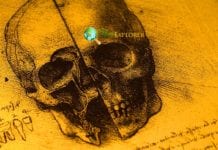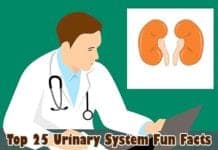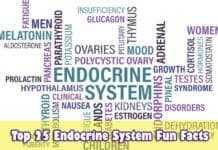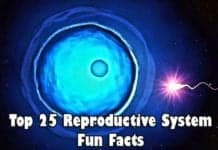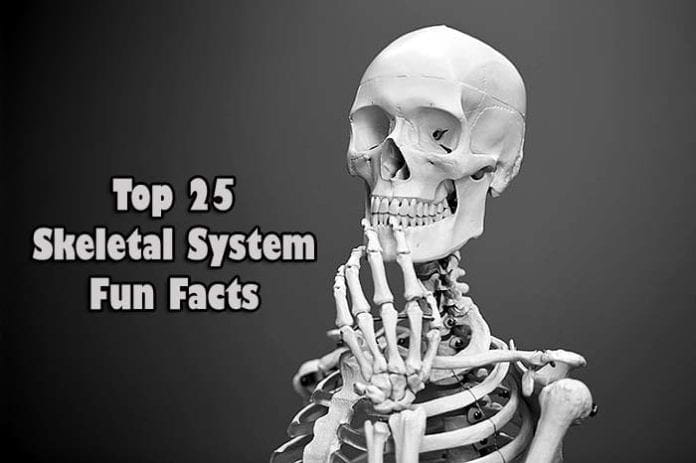
Fun Facts About The Skeletal System: The Skeletal system forms the human skeleton that supports the body and allows for movement. Paramount to the functioning of the skeletal system is the muscular system, without which the skeletal system will collapse.
Therefore, the human skeleton cannot function independently without the continued support of the muscles, ligaments, and tendons. The human skeletal system is also responsible for posture, support, balance, movement, and flexibility.
Overall, the skeletal system provides a frame to the human body and helps it to function in terms of movement.
Fun Facts About The Skeletal System
Here are the top 25 fun facts about the human skeletal system.
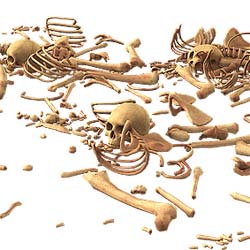
- There are 206 different kinds of bones present in the human body that make up the skeletal system.
- These 206 bones may differ in length and mass between individuals, which is the basis of the difference in height between people.
- Depending on location in the human body, different sets of bones function differently. If a bone breaks, the bones around it also cannot function properly until it heals.
![]()
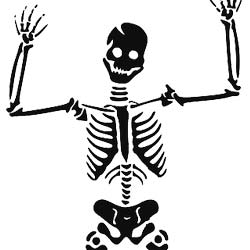
- The human skeleton is made up primarily of two types of bones – cortical and trabecular.
- The cortical bones are hard and form the primary type of bones in the body. They are also called structure bones.
- Trabecular bones are generally soft and spongy and are usually found layering the inside of other bones. These bones are found in the pelvis, ribs, and skull.
![]()
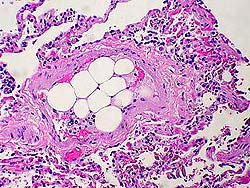
- Bone marrow is a spongy substance that is generally found on the inside of large bones.
- Large bones such as the hips, pelvis, and femur mainly contain bone marrow.
- It is rich in stem cells that are the precursor cells to forming every cell type in the body.
![]()
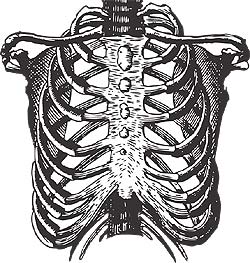
- Babies have around 270 bones at birth.
- By adulthood, the total number of bones is reduced to 206.
- Some tiny bones fuse to form larger bones as babies grow.
![]()
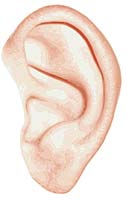
- The inner ear has the smallest bone in the body called staples. It helps in the functioning of the middle ear.
- The staples, along with other bones (such as the axil and the hammer), function by transmitting sound waves to the eardrum.
- It is sometimes called “stirrup” due to its unusual Y shape.
![]()
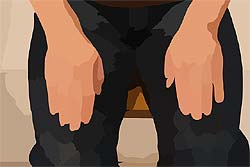
- The femur, also known as the thigh bone, is the largest and longest bone in the skeletal system.
- It runs from the hip to the knee and carries the bulk of the upper body weight of the human skeleton.
- The femur joins the hip and knee joint, providing strength.
![]()
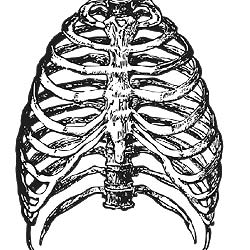
- Most people are born with 12 ribs that encase the lungs and upper abdomen.
- Some people (< 1%) are born with an extra 13th rib called the cervical rib.
- In most cases, this rib is removed as it causes further health issues.
![]()
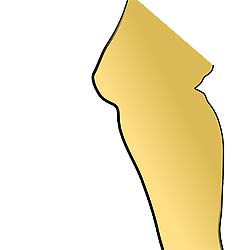
- The knee joint is one of the most important joints in the human body. Its main function is attributed to walking.
- Three bones connect at the knee joint – the femur, the tibia, and the patella. The tibia is the bone of the lower leg.
- The three bones at the knee joint are large and require a larger joint to accommodate them. Hence the knee joint is the largest in the human body and is prone to injuries.
![]()
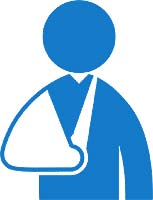
- A fracture or breakage in the bone can heal itself over time by producing new bone cells.
- For the bone to heal, it must be kept in an appropriate position and protected from further injuries.
![]()
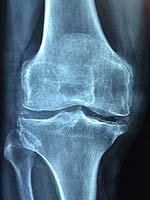
- Osteoporosis is a condition quite common in older women. Brittle bones characterize it.
- The loss of calcium and mineral deposits from the bone can lead to an increased risk of fractures, making bones susceptible to breakage.
- The condition can be prevented by properly taking vitamins and minerals.
![]()
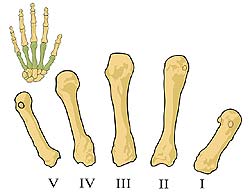
- Each hand is made up of 14 phalanges, 5 metacarpals, and 8 carpals.
- Each foot comprises of 14 phalanges, 5 metatarsals, 5 tarsals, the calcaneus, and the talus. It also contains two small pea-shaped bones called the sesamoids.
![]()
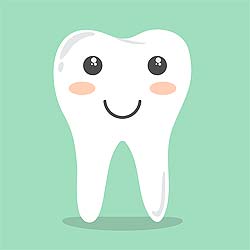
- Despite the popular notion, bones are not the hardest substance in the body.
- The enamel, a covering of teeth that protects them from daily wear and tear, is much stronger than bones.
![]()
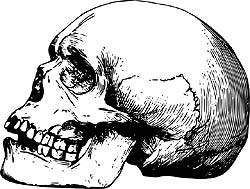
- The lower jaw that is also called the mandible, is the only moving part of the entire skull.
- The skull, also called the cranium, protects the brain from injury and is made up of a fusion of different bones.
- The skull comprises 22 different bones that grow together in size from childhood. The skull of infants is very soft, as it allows for ease during childbirth.
![]()
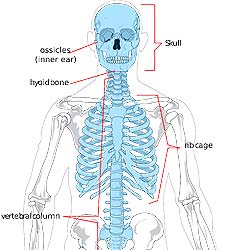
- The hyoid bone is present in the oral cavity and is not connected to any other bone.
- It does not form part of any other joint and functions as an anchoring point for the tongue.
- The hyoid is a horse-shoe-shaped bone found at the tongue’s root.
![]()
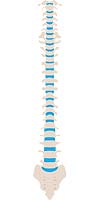
- The spine houses the spinal cord that connects every body part to the brain via the spinal cords.
- The spine protects the spinal cord from injury and acts as a support system for the human skeleton.
- The lower end of the spine is known as the sacrum.
![]()
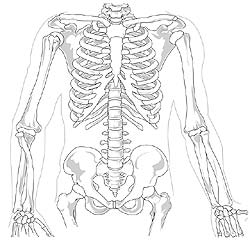
- Apart from movement and support, the skeletal system also produces new cells from the bone marrow.
- The bone marrow contains stem cells that act as precursor cells for the differentiation into different lineages.
- The skeletal system also helps protect the organs and organ systems from injury.
![]()
.
- The outer layer of the bone is made up of hard material and is compact, known as cortical.
- The second layer is softer and is called the spongy layer or trabecular.
- The innermost layer contains bone marrow and has a jelly-like an appearance.
![]()
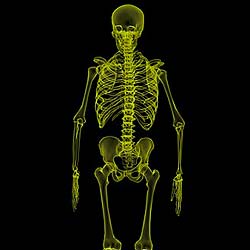
- The axial skeleton supports the vertical and central axis of the body. The head, neck, chest, and back bones form this skeleton and offer protection to the brain and spinal cord.
- The muscles that move the head, neck, and back are attached to the axial skeleton and connect to the hip joint and the limbs.
- The appendicular skeleton comprises 106 bones that connect to the axial skeleton and the limbs.
![]()
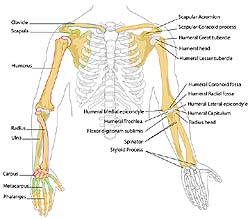
- Long bones are comprised of the clavicles, the humeri that make up the arm, radii, and ulna that make up the wrist, metacarpals that form the fingers and palm, and the femurs, tibiae, fibulae, metatarsals, and phalanges that make up the lower limbs.
- Short bones are made up of the carpal, tarsal, patellae, and sesamoid bones.
- Flat bones comprise the skull, mandible, scapulae, sternum, and ribs.
- Irregular bones comprise the vertebrae, sacrum, coccyx, and hyoid bone.
![]()
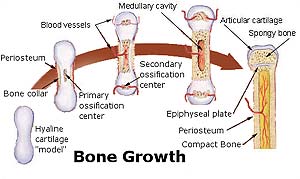
- Bones may undergo longitudinal and radial growth during life.
- Longitudinal and radial growth occurs during childhood and adolescence.
![]()
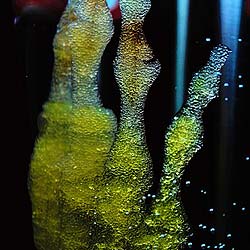
- Osteoprogenitor cells differentiate into osteoblasts that synthesize bone matrix on bone-forming surfaces.
- They also give rise to the osteocytes inside the bone matrix that supports bone structure and the protective lining that covers the bones.
![]()
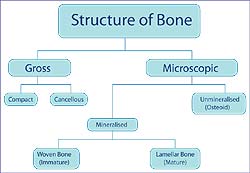
- Bone is composed of a mixture of minerals, organic matrix, water, and lipids.
- The mineral content of the bone comprises hydroxyapatite, carbonate, magnesium, and acid phosphate.
![]()
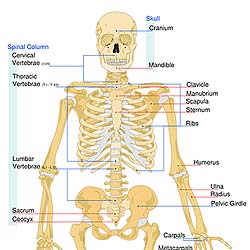
- Larger bones, such as the femur, are stronger than smaller bones, like the humerus or the bones of the fingers, even though both have equal amounts of mineral density.
- As bone diameter expands, the strength of bone increases.
![]()
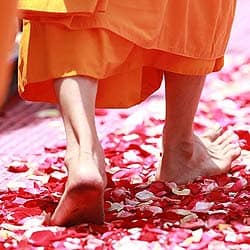
- The lower skeleton is specialized for stability during walking or running.
- The upper skeleton provides greater mobility and different ranges of motion that allows us to do actions such as turn our necks or lift objects.
![]()
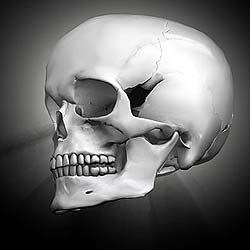
- These 80 bones include the skull, vertebral column, and thoracic cage.
- 22 bones form the skull. The head also has seven additional bones: the hyoid bone and the ear ossicles.
- The vertebral column has 24 bones, and the thoracic cage includes 12 pairs of ribs and a sternum.
![]()
The human skeletal system has a variety of functions, the most critical being movement and support of the body. It serves as the basic foundation which houses and protects all the body’s other organ systems. One cannot imagine functioning without a proper skeletal system.
Many deformities and injuries to the human skeleton render the individual incapable of movement. They may also contribute to the improper functioning of other human body systems.
It is essential to fully appreciate and understand the centrality of the human skeleton towards all other systems of the human body and to ensure proper growth and development through nutrition and well-being.




